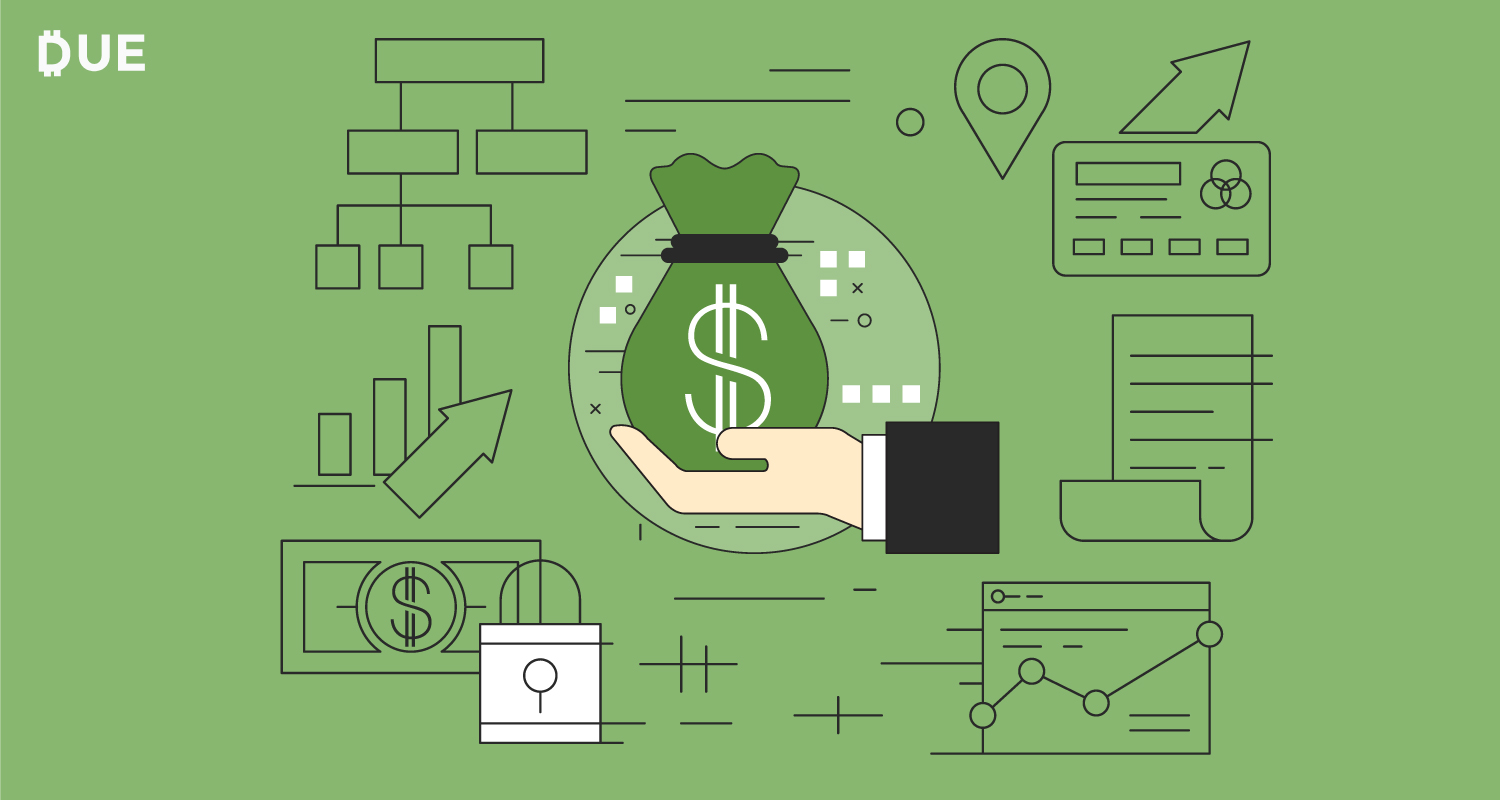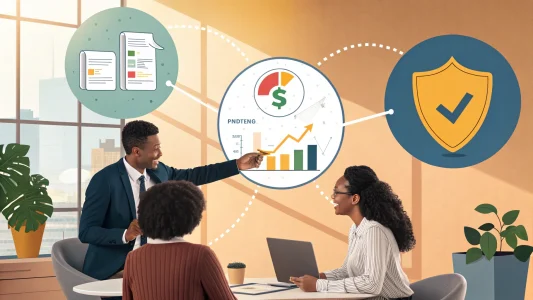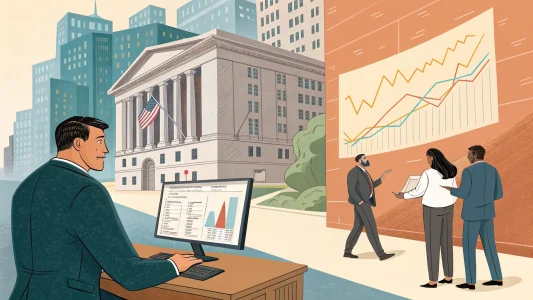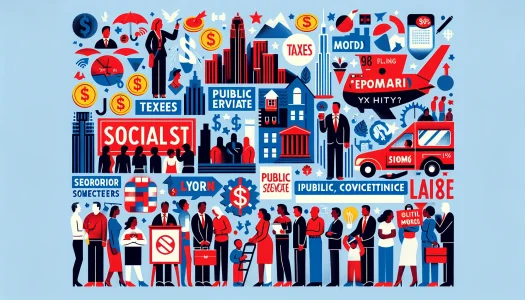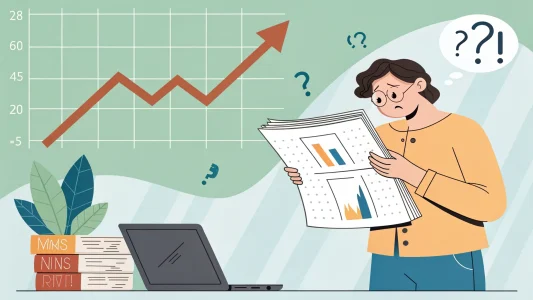One of the most important personal finance moves you can make is starting an investment portfolio, but if you’ve never done it before, it can seem intimidating. And if you’ve gone through the process of starting your own business, you may be overly reliant on that business as a source of recurring revenue, downplaying the importance of investing.
Lucky for you, starting an investment portfolio has gotten easier over the past few years, and if you have a few thousand dollars or more in savings, you already have everything you need to get started. In this guide, we’ll explain exactly what makes an investment portfolio so important to build, and how to build one from scratch—even if you have zero personal finance experience.
Table of Contents
ToggleThe Importance of an Investment Portfolio
Let’s start with an explanation of what investing is and why it’s so important. Investing in an asset usually introduces you to a number of benefits; that asset will typically be expected to increase in price over time, and you may be able to make money from it in the meantime in the form of dividends or rent.
There are several important advantages to understand here. With an investment portfolio, you can:
- Outpace inflation. Over time, inflation has the power to undermine the spending power of your savings. If you don’t believe this, ask yourself whether you’d rather have $10,000 in the 1950s, when $10,000 could buy you a house, or $10,000 today? Most investments allow you to earn a substantial interest rate, often at least 2 to 4 percent, easily outgrowing inflation.
- Accumulate wealth. More to the point, investing helps you accumulate wealth. Historically, the stock market has grown at a rate upwards of 10 percent annually. Even estimating more conservatively and adjusting for inflation, you can expect a growth rate of 7 to 8 percent annually. At 7 percent interest, with compounding interest in play you can expect your initial principal to double roughly every 10 years, and if you’re continually adding to your principal, you’ll see an even faster growth rate. This exponential growth curve can transform even a modest initial investment into an impressive amount of wealth, given enough time.
- Diversify your income. Your business might be doing well financially, but that might not last forever. If your business faces hard times, or worse, if it’s forced to close, you’ll want to have a secondary source of income to keep you afloat. With the right holdings, your investment portfolio can serve this role.
- Protect your assets. Asset diversification can also help you protect your holdings. If your assets are distributed across a number of different classes, you’ll be less susceptible to major financial events and/or economic turmoil.
Building a portfolio of investments typically means investing in many different types of assets simultaneously, and rebalancing that portfolio as your needs change.
Types of Assets to Consider
Your investment portfolio should contain multiple types of assets, potentially including:
- Stocks represent shares of ownership in publicly traded companies. Their prices tend to increase or decrease according to the company’s performance, so if you choose a company with good leadership, long-term plans, and a strong infrastructure, you can expect share prices to increase over time. Stocks may also pay out dividends, or quarterly distributions of profit, representing a stream of income. Stocks are riskier than some of the other assets on this list, but they also offer very attractive growth potential. With the help of technical analysis (like the analysis of candlestick charts), you can make smarter stock picks, and get the highest possible growth rate for your investments.
- Bonds function almost like loans; buying bonds makes your principal available to a specific entity (usually a company or the government), and in return, you’ll generate interest. Most bonds have a relatively low interest rate—something like 2 to 4 percent—so they aren’t as high-growth as stocks, but they do tend to be less risky.
- ETFs and mutual funds. You could also invest in mutual funds and exchange traded funds (ETFs), which are very similar in nature. Both allow you to invest in many different assets simultaneously; for example, you may purchase an ETF that tracks the S&P 500 index, allowing you to benefit from the broad market upturns and downturns that follow, rather than tying your success to a single asset. These tend to be great options for people who want to invest in stocks, but don’t want to make individual stock picks.
- Real estate. If you’re interested in more tangible assets, consider investing in real estate. There are many ways to invest in real estate, each with pros and cons, but newcomers often turn to rental properties; with a rental property, you can collect rent from tenants in excess of your ongoing monthly expenses, resulting in a profit. And later, you can probably sell the property for more than you initially paid for it. You can also invest in real estate via real estate investment trusts (REITs), which trade much like stocks.
- Precious metals. People often turn to precious metals like gold and silver as a way to hedge against the stock market. Gold and silver are seen to be intrinsically valuable, making them safe and tangible investments; however, their growth rate is highly unpredictable.
- If you are nearing retirement, you might also purchase an annuity. In exchange for a specific amount of money down, you’ll sign up to receive a steady rate of money on a periodic basis (often monthly) for the rest of your life.
Balancing a Portfolio
One of the most important concepts in building an investment portfolio is balancing that portfolio; in other words, you’ll need to choose the right selection of assets to contain within your portfolio. Most of the time, the main factor for your decision making here is risk.
The more diversified your portfolio is, the less risky it’s going to be; if any one type of asset underperforms, you’ll have plenty of other asset types to make up for it. Additionally, some assets are inherently riskier than others. For example, as you’ve seen, stocks are inherently riskier than bonds, despite having a higher average growth rate.
How you balance your portfolio depends on your personal aversion to risk. Generally speaking, the younger you are, the more risk you can tolerate; many people begin with a portfolio that’s mostly centered on stocks and other risky assets, then gradually shift to include other, more stable assets.
No matter what kind of portfolio you want to maintain, it’s important to analyze and rebalance it periodically. For many people, this is an annual or semiannual excursion; take a look at your holdings and evaluate what you want to adjust.
Opening an Account
Thanks to modern technology, it’s easy for anyone to open an account that allows them to buy and sell assets; this is known as a brokerage account. You can open a brokerage account for free with most major financial service providers.
If you’re new to the world of investing, you may want your first account to be a retirement account like a Roth IRA. And if you’re not sure how these retirement accounts work, or if you’re not sure what retirement is, you might want to read up on some personal finance basics before proceeding.
Accumulating Initial Funds and Making Consistent Contributions
You don’t need to already be wealthy to start investing. In fact, many modern brokerage platforms don’t require any minimum to open an account. Others may require you to have a few hundred dollars to open an account.
Either way, you’ll want to accumulate at least a few hundred dollars to make your first investments. Even more importantly, you’ll want to forge a path for yourself to make consistent contributions in the future; for example, you can commit to investing $500 per month, and set up automatic withdrawals in your app of choice. This consistency will help you keep track of your goals, and will make it easier to grow your wealth from scratch. You can always increase your monthly contributions over time.
If you’re having trouble finding the extra money to contribute on a monthly basis, you’ll want to take a close look at your personal budget. Are you living below your means, or are you living paycheck to paycheck? Are there any major expenses you could cut or reduce? Can you downsize your living situation to free up some extra cash on a monthly basis?
Choosing Your First Investments
Once you have automatic contributions enabled and you have some money in an account, you can select your first investments. If you’re not sure what to start with, you can invest in a broad market ETF that tracks a major index; it’s a way of diversifying your holdings with a single purchase. And if you’re feeling more adventurous, you can start researching individual stocks to invest in. Either way, consider leveraging the power of dollar cost averaging to hedge against the possibility of bad timing.
When you have a “real” investment portfolio set up, you’ll feel much more confident about your own abilities as an investor. You’re bound to make mistakes as you begin to invest more, but treat them as learning experiences on the path to a brighter financial future. Just having an investment portfolio is a massive step forward that puts you ahead of most working adults, so you should feel proud of yourself. It’s only going to get easier from here as you inch closer to your long-term financial go

